P67 $190 Part 2: MSI P67A-GD65, ASRock P67 Extreme6 and ECS P67H2-A2
by Ian Cutress on May 10, 2011 1:36 AM EST- Posted in
- Motherboards
- MSI
- ASRock
- P67
- ECS
- Cougar Point
ECS P67H2-A2: Board Features
| ECS P67H2-A2 | |
| Market Segment | Performance |
| CPU Interface | LGA 1155 |
| CPU Support | i3/i5/i7 Sandy Bridge |
| Chipset | P67 |
| Base Clock Frequency | 100 MHz Only |
| DDR3 Memory Speed | 1333 MHz by default, 1067-2133 MHz supported |
| Core Voltage | Default, +10 mV to +630 mV in 10 mV intervals |
| CPU Clock Multiplier | Dependent on CPU |
| DRAM Voltage |
Default -300 mV to -50 mV in 50 mV intervals +10 mV to +630 mV in 10 mV intervals |
| DRAM Command Rate | Auto, 1T or 2T |
| Memory Slots |
Four 240-pin DDR3 DIMM slots in dual-channel Regular unbuffered DDR3 memory Up to 32GB total supported |
| Expansion Slots |
2 x PCI Express 2.0 x16 slots (x16 or x8/x8) 1 x PCI Express 2.0 x1 slot 2 x PCI slots Supports ATI Crossfire Supports NVIDIA SLI |
| Onboard SATA/RAID |
2 x SATA 6.0 Gb/s ports (gray) supporting RAID 0/1/5/10 4 x SATA 3.0 Gb/s ports (blue) supporting RAID 0/1/5/10 2 x SATA 6.0 Gb/s ports (gray) from Marvell 9128 supporting RAID 0/1/5/10 2 x eSATA 6.0 Gb/s ports from Marvell 9128 |
| Onboard |
4 x SATA 3Gb/s connectors 4 x SATA 6Gb/s connectors 4 x Fan Headers (1x4-pin, 3x3-pin) 3 x USB 2.0 headers support additional 6 USB 2.0 Ports 1 x USB 3.0 header supports additional 2 USB 3.0 Ports 1 x Power on button 1 x Reset button 1 x Front panel switch/LED header 1 x Onboard Buzzer 1 x Front panel audio header 1 x Debug LED Display 1 x SPDIF out header 1 x Serial port header |
| Onboard LAN | Dual Realtek RTL8111E Gigabit Fast Ethernet Controllers with Teaming |
| Onboard Audio | Realtek® ALC892 8-Channel HD Audio |
| Power Connectors |
24-pin EATX Power connector 8-pin EATX 12V Power connector |
| Fan Headers |
1 x CPU Fan (4-pin) 1 x CASE Fan (3-pin) 1 x PWN Fan (3-pin) 1 x SYS Fan (3-pin) |
| IO Panel |
1 x PS/2 keyboard & PS/2 mouse connectors 2 x RJ45 LAN connectors 1 x Audio port (Line-in, Line-out, Mic-in) 1 x Optical S/PDIF Out connector 1 x Clear_CMOS button 2 x USB 3.0 ports compatible to both USB 3.0/2.0 devices (blue) 2 x eSATA 6.0Gb/s ports 8 x USB 2.0 ports |
| BIOS Version | 2011/03/03 |
| Warranty Period | 1 Year + option for 1 Year extension |
ECS P67H2-A2: In The Box
- 8 SATA Connectors with locking
- USB 3.0 3.5” Front Panel with rear bracket option
- 3 Port SLI connector
- I/O Shield
- 4 Plastic USB protectors
I have a strong feeling that a USB front panel will become the de facto addition for motherboards in the future—a lot of Cougar Point consumer offerings are starting to provide one. Supplying 8 SATA connectors also earns ECS some plus points.
ECS P67H2-A2: Software
A lot of the software available for the ECS P67H2-A2 is the same as what we saw with the ECS H67H2-M with a couple of exceptions—the overclocking utility eOC, and a power saving utility eGS.
eOC
In terms of what we’ve seen from other OS overclocking utilities from other manufacturers, eOC is pretty low down on the ladder to begin with—that’s even before you realize that it’s an old hash from the socket 775 software and that to get it to work requires some effort!
The main page is just a simple temperature monitor for the CPU and System temperatures. What surprises me here is that the CPU temperature is measured in terms of PECI, or the number of degrees before the CPU is throttled due to thermal limitations, rather than an absolute value. I wouldn’t trust it with a barge pole to be honest, and I’d use free temperature monitor software.
The Easy Tuning tab offers voltages and a CPU Frequency slider, allowing you to adjust BCLK. This slider is the throwback from socket 775 days, when BUS frequencies could reach several hundred MHz—as such, it offers between 100 MHz and 800 MHz (!) in 1 MHz intervals. A Sandy Bridge processor in reality can manage a few MHz due to its integrated clock generator subsystem, but not several hundred! When I initially played with this option, it wouldn’t work—regardless of how this is set, clicking "Apply" would attempt to apply the new clock frequency, and fail. Even when set and the OS is restarted, it would stick at 100 MHz. After contacting ECS, it turns out you need to apply two obscure BIOS options—both ‘ICC Set Clock Enables’ and ‘Send ICC Lock Registers’, and then the eOC software will apply a BCLK, as long as the machine stays stable. As we’re limited to per MHz values, it’s pretty coarsely grained. Also, any change here directly changes the values in BIOS.
The Advance Tuning menu gives you reigns over the voltages on offer. Amazingly, these settings work. Maybe I shouldn’t be amazed—if they’re on offer, they should work anyway, because this is what we pay for. The issue here is with the CPU voltage—on idle, the CPU will flicker between various low state voltages, and this slider value will flicker too. So if you want to select 1.2 V, you need to make sure what state the CPU is in at the time and apply it at the right moment. If a high voltage is selected at a low CPU state, you could end up with a potentially damaging high voltage in a full CPU load scenario.
The Options menu, apart from the spelling mistake, doesn’t really do much, apart from enabling a saved eOC to enable itself at bootup.
eGS
The eGS software is automatically set to ‘auto’ mode, but gives options of ‘Normal’ or ‘Power Saving’ mode. When we selected Power Saving mode, at idle the CPU voltage was reduced to below 0.75V, but at full load there was no difference in voltage between Normal and Power Saving. The background turned a nice red, however.
eBLU
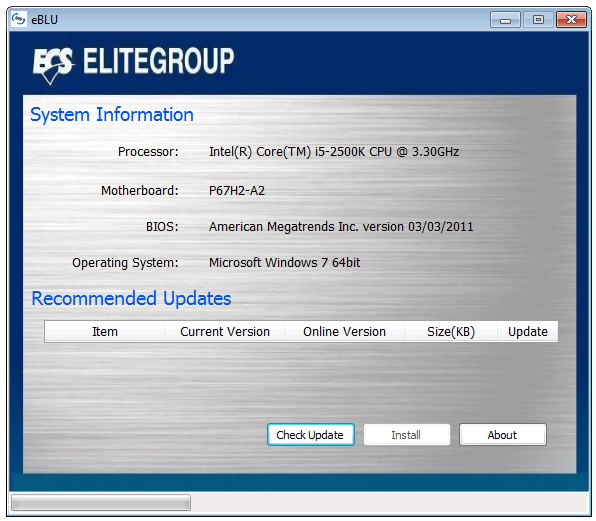
The BIOS live update utility works rather well, automatically detecting if a newer BIOS is available and performing the update.
eDLU
The driver update tool is disappointing—pressing Start just takes you to the webpage relevant to your motherboard and operating system. Here, we’d want a list of drivers currently installed, their versions, an option to automatically search and apply new driver updates at the flick of a button. This is ultimately a cheap way out to say that this tool is supplied.
eSF
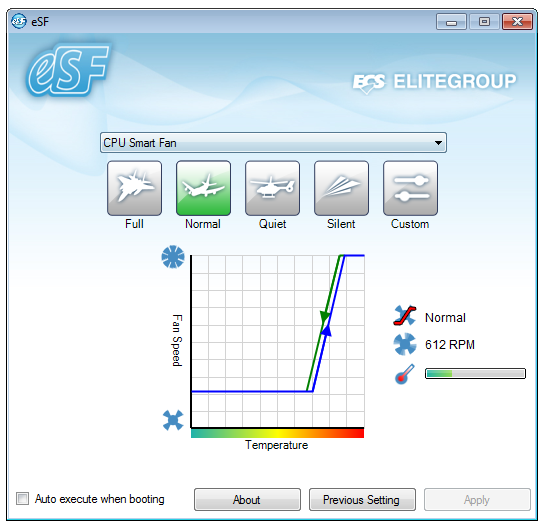
Arguably one of the highlights of this motherboard is its fan control. In the OS, the eSF software allows the user to change the CPU and SYS fan speeds and temperature controls. This works very well on the predefined settings, and even better on the custom setting.
eJiffy
The eJiffy software is a quick-boot technology which loads the user into a simple Linux interface through which they can access the web. Loading into eJiffy is very quick compared to an SSD and Windows combination, and gives a simple Mozilla type web browser, suitable for when a user wants nothing more than to browse. We covered eJiffy in more detail in our H67 ECS review as it is a pretty neat addition and we rather like it—read here for more details.


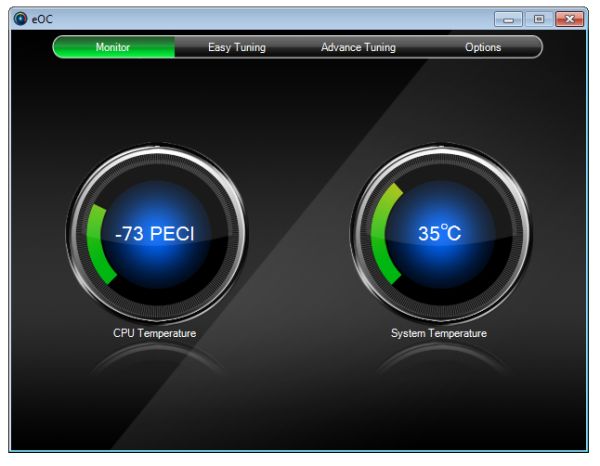
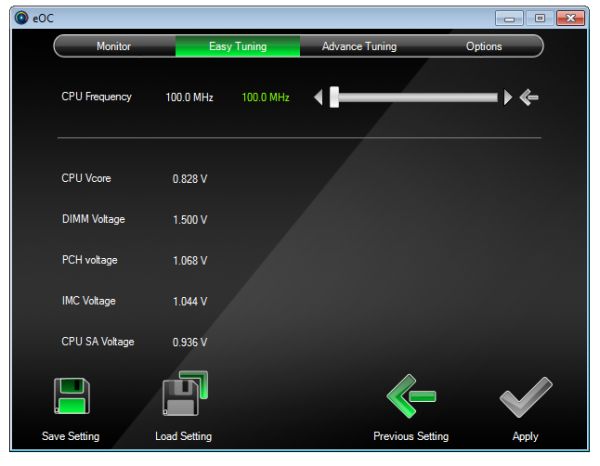
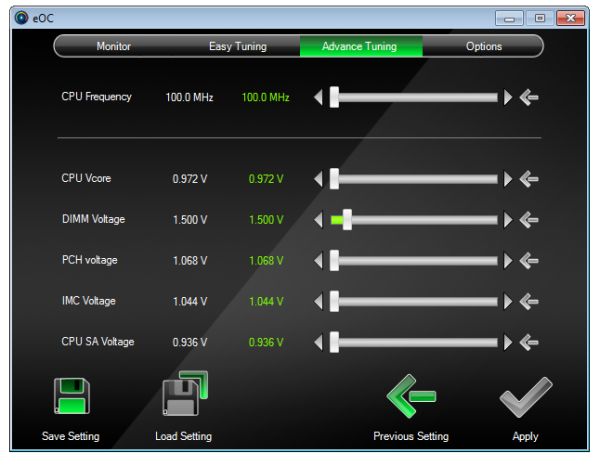
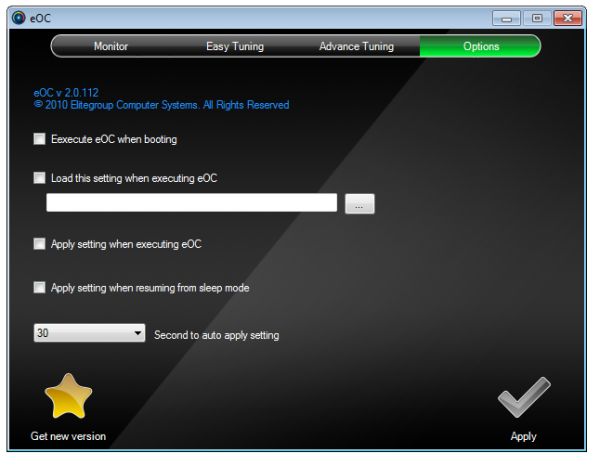
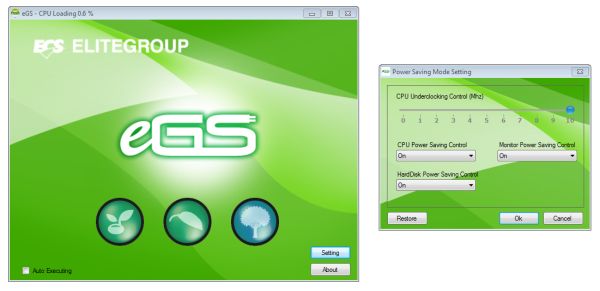
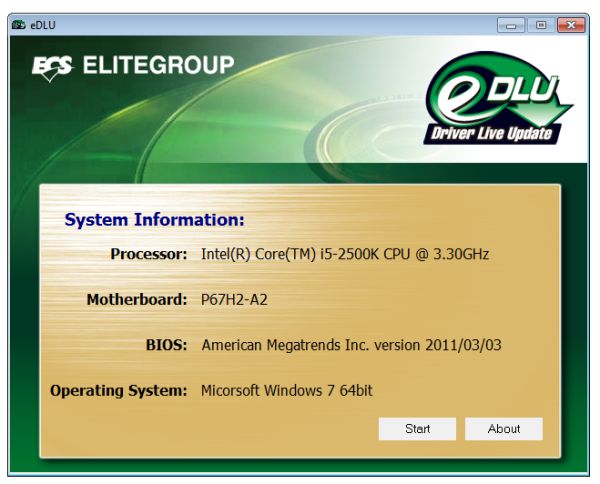
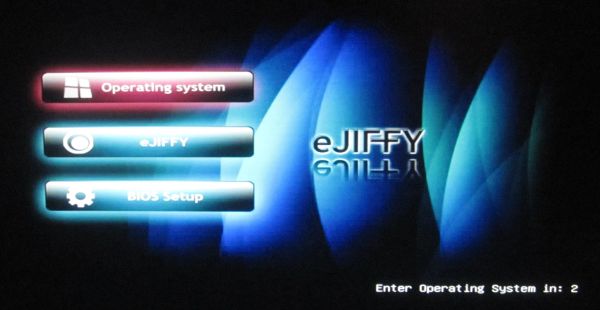








27 Comments
View All Comments
Etern205 - Tuesday, May 10, 2011 - link
Didn't read the article yet, but IMO most P67 based boards within the same price range are similar to one another and in the past if I was looking for a board, I'll read every damn review on the product I want. Now, it's just pick a damn board with the features you like to have and be happy with it.fic2 - Tuesday, May 10, 2011 - link
Still can't get rid of the legacy PS/2 port.... Just makes me laugh.Etern205 - Tuesday, May 10, 2011 - link
What is there to laugh about?Some still have a good PS/2 devices which is a waste just to junk it out and PS/2 has a faster detection over USB. This benefits users who wants to access the bios where USB keyboards sometimes fails miserably.
The most expensive SNB board from Asus still has a PS/2 port (combo PS/2).
http://www.newegg.com/Product/Product.aspx?Item=N8...
Hrel - Tuesday, May 10, 2011 - link
Can someone please explain to me why despite the fact that more and more chips are moving off the motherboard and onto the CPU motherboards seem to keep getting more and more expensive. Ok, increased power delivery testing; I get that. But the motherboard manufacturers are literally buying fewer chips to make their board. These things should be getting cheaper!The northbridge is on the CPU, the iGPU is on the CPU and that right there is the majority of the cost of a motherboard. Seriously, WTF! $190 is the sweetspot? WTF! $130 bought a hell of a board 3-5 years ago. Now they're cheaper to make but cost more? WTF! I shouldn't be spending anymore than 100 bucks on a brand new Asus P5NE-SLI class motherboard. I'm an enthusiast, we should be seeing tons of these things for 50 bucks. WTFFFFFFFFFFF!
ggathagan - Tuesday, May 10, 2011 - link
You're paying $100 for a brand new P5NE-SLI because it's obsolete technology which translates into higher support costs for the manufacturer.The same can be said for SDRAM, the original DDR RAM and Socket 478 CPU's.
As to why a *modern* motherboard costs so much with more of the chipset being integrated into the CPU: They don't.
You can get a LGA1155 motherboard for under $50 and $130 still gets you "a hell of a board ".
P67-based motherboards are not at the low end of the market, so any decently featured mid-tier motherboard remains in the $150-$200 range.
Regardless of what Intel or AMD incorporate into the CPU, the support chipsets *still* need to be purchased.
AMD and Intel set the price for that, not Asus, MSI, Gigabyte, etc...
Sound and LAN support remain seperate from the core chipset.
Lastly, in the case of Intel systems, there is the desire for USB 3.0 support that has to be added via additonal chips.
Upper tier boards have never been about the chipset/CPU; they've always been about the "bells & whistles" factor.
As such, the buyer's perception of what is valuable is more of a factor than logic centering around what a specific chipset or CPU brings to the table.
TheJian - Wednesday, May 11, 2011 - link
I don't think a decently featured board costs $150-200. My current GByte board had all the bells and whistles for $129. The only thing missing from the top boards was more vid slots, and a few more Sata's (mine has 8 so plenty for me).http://www.newegg.com/Product/Product.aspx?Item=N8...
$70, has everything but Btooth/Firewire (who cares)/SLI (who cares). Includes both USB3 and 2 SATA 6 ports.
What features are there that cost another $130? I get that P67 adds another $30 (which is where P67 boards start on newegg), and we get overclocking for that (but we got screwed out of a vid card on that deal so hmmm).
http://www.newegg.com/Product/Product.aspx?Item=N8...
$110 for P67 Gigabyte D3 B3, USB3, Sata6. Missing Btooth/1394/SLI(xfire-either). We now know you can put USB3 on a $70 board (jetway has a $70 USB3 board too). They have an ECS for $100, and it has USB3 and even 2 vids.
So are these worth $100? A few more USB's and Btooth is all I'd ask for (and there's already plenty of USB). USB3 chip probably costs a few bucks at best (likely $1). They throw on audio for $1. I don't call the boards in this review mid tier. I'd say more like upper class. SLI/Xfire used to be all that was needed to put your board into upper class. It should still be that way. Unless it's a server board, anything over $200 is probably just a pretty box. Maybe someone else can point to a reason why prices shot up on the top end and the mid is considered by some as $150-200 (I thought it was $100-150, with the low being $60-100, but that's just me).
You can't say the dollar is dropping or bring up gold - I shouldn't be able to post a $70 full featured H67 or $100 full featured P67. The guy on the $100/P67 is overclocked at 4.8ghz (i7-2600K) and folding 24x7...ROFL. I think this board's a winner. Probably should be in your next review :) Might be a little low, but you get the point. Then again, this is probably what most will buy (or lower in the H67 range most likely).
Rookie Monster - Tuesday, May 10, 2011 - link
Two reasons come to mind.1. Gold is $1500oz
2. U.S. dollar is falling like a rock.
knedle - Tuesday, May 10, 2011 - link
I even found a movie on youtube showing MSI Games:http://www.youtube.com/watch?v=dmdoRfgNkCg
I think it may be usefull if your HDD with important data just died and you want to commit suicide. ;)
wifiwolf - Tuesday, May 10, 2011 - link
I'm with Hrel on this. It's just ridiculous that we're buying boards with less parts needed even more expensive then they were before moving northbridge and int-graphics.PS: Unfinished chipsets should be for beta testing and not for sale.
Patrick Wolf - Tuesday, May 10, 2011 - link
I agree, these boards should be cheaper (which could be said for most components really), but to be fair these aren't all $190 boards, they were at 1st but new tech is always more. Lowest current price I could find for each board is as follows:P67A-GD65 - $170 (newegg, could be even cheaper at superbiiz depending on promo)
P67 Extreme6 - $200 (superbiiz, again promo)
P67H2-A2 - $173 after MIR (newegg)
GA-P67A-UD4 - $175 after MIR (superbiiz, again promo)
P8P67 PRO - $180 (newegg/superbiiz, again promo)
Compare that to 775. The ever popular GA-EP45-UD3P was about $130 and now the GA-P67A-UD3 which has similar features is $125. Or better yet the MSI P67A-G43 for $125.